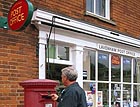Village greenbelt threatened
Protecting the greenbelt will cease to be a key consideration of planners across England if the Government relaxes planning laws to achieve rural housing targets


Planning laws in England are expected to undergo a shake up later this month which could lead to an increase of development on greenbelt land.
According to the Telegraph newspaper, protecting the greenbelt will cease to be a key consideration of planners across the country.
Greenbelt land has hitherto lain beyond the grasp of developers and house builders. It is thought this move will help the Government reach its target of building 3 million new homes by 2020.
Farmers and other landowners will even be given incentives to sell land to developers and councils will be told to earmark new sites in every village and community where locals are struggling to afford homes.
But countryside protection groups have warned any significant relaxation of planning curbs is unlikely to lead to sensitive development.
Exquisite houses, the beauty of Nature, and how to get the most from your life, straight to your inbox.
Country Life is unlike any other magazine: the only glossy weekly on the newsstand and the only magazine that has been guest-edited by His Majesty The King not once, but twice. It is a celebration of modern rural life and all its diverse joys and pleasures — that was first published in Queen Victoria's Diamond Jubilee year. Our eclectic mixture of witty and informative content — from the most up-to-date property news and commentary and a coveted glimpse inside some of the UK's best houses and gardens, to gardening, the arts and interior design, written by experts in their field — still cannot be found in print or online, anywhere else.

